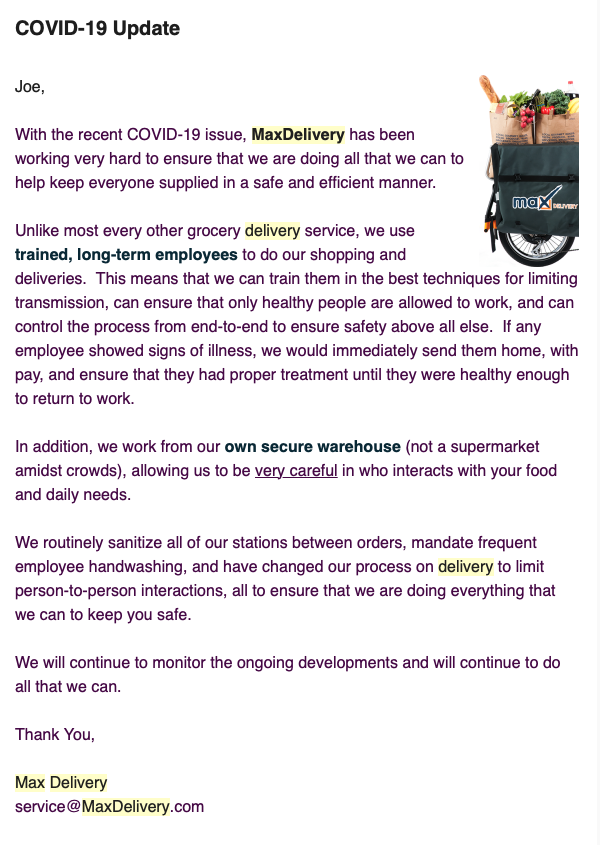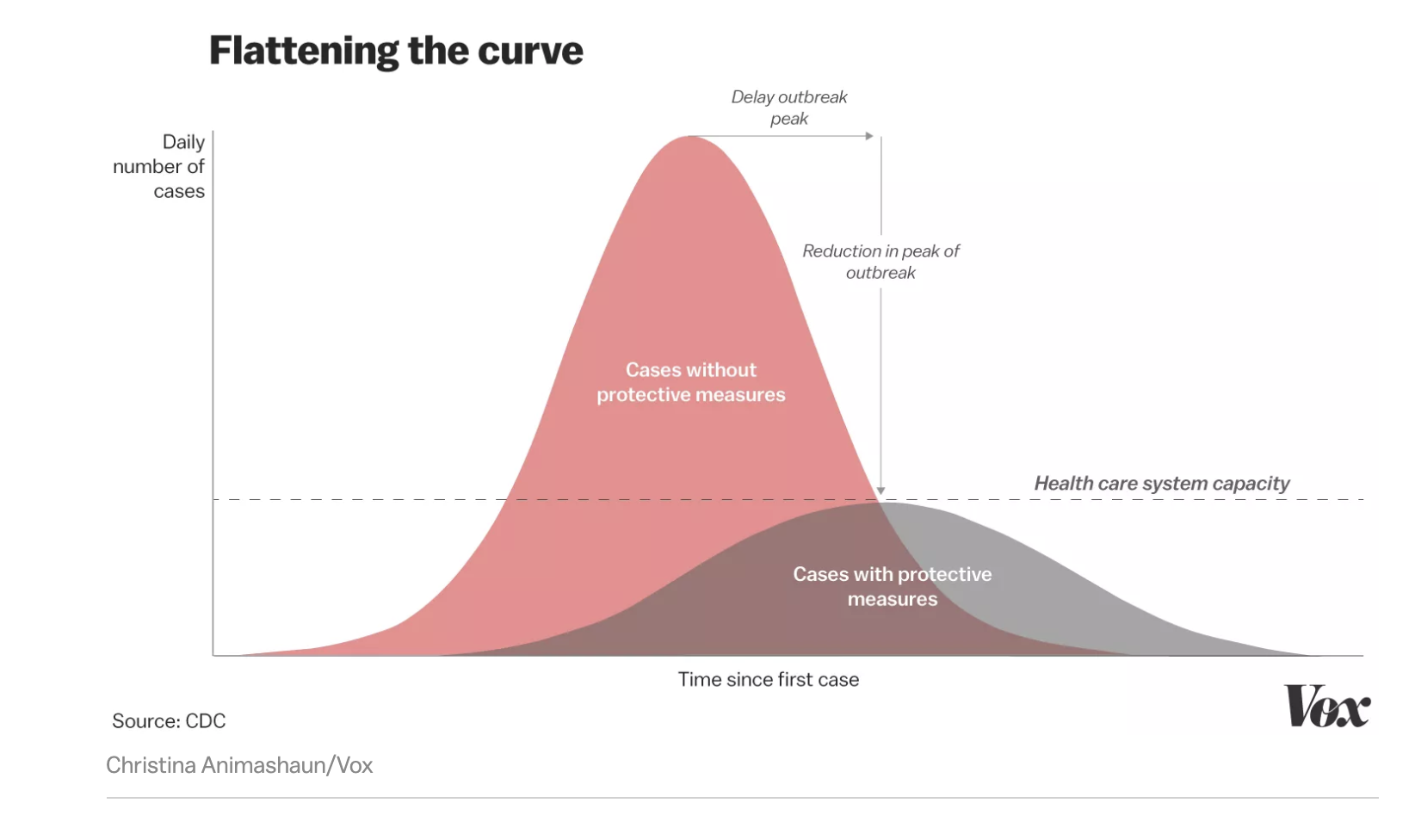Trending
How Does Coronavirus Change the Way We Do Our Job as Marketers?
The last few days have been surreal. I’ve ping-ponged between troubling coronavirus headlines and my typical work as head of marketing for a tech company. It’s hard to not feel uneasy when that thought pops into your head: How does this affect how I do my job?
However, it’s a necessary question to ask. Because even though many of us are working from home, we’re still working. And a pandemic changes how we do that.
Over the past couple of weeks, I’ve had to figure out how to turn an in-person event into an engaging virtual event and navigate postponed speaking gigs and sponsorships. My conversations with customers and marketing friends ultimately turn to how the pandemic is changing their focus at work. Along the way, I’ve been thinking about how everything that’s happening affects the people who read our blog and newsletter.
So, I figured I’d share some thoughts on how we can do our jobs well and responsibly amidst these changes. If you have thoughts to add, email me at lazer@contently.com—we’d love to hear from you.
1. We need to answer our audience’s questions honestly
One of the most helpful emails I received this week was from Max Delivery, a grocery delivery service in downtown Manhattan. I love them because, in addition to regular groceries, they deliver from local shops like the Pickle Guys and Murray’s Cheese.
On Monday, I was sitting at work thinking about how I should stock up on essentials when they sent me an email, answering questions I didn’t even know I had about grocery delivery during coronavirus.
The company highlighted how it was doing everything it could to keep everyone supplied in a safe and efficient manner:
- Using full-time employees who were being trained on the best techniques for limiting transmissions
- Offering paid sick leave to ensure that no one working showed signs of illness
- Operating its own secure warehouse, rather than a supermarket, allowing employees to be very careful about food safety and crowds
- Implementing strict sanitation protocols and changing the delivery process to limit person-to-person interactions

The reassuring email bolstered my trust in Max Delivery. (I’ve since made $300 worth of orders.) It also made me think about what immediate questions we could be answering for our customers and readers.
For our customers, we could explain the precautions we’re taking (WFH, no work travel) and offer our help with common challenges we’re seeing.
For our audience at large, we could share best practices for collaborating on content remotely, explain how we’re approaching virtual events, and talk through some of the mindset adjustments we’re making as we figure things out on the fly. We could even just reach out to ask what challenges others are facing.
That thought process is powering some adjustments to our content calendar, with a reminder in mind: Always be helpful, always be honest, never be opportunistic.
Marketers need to hold themselves to a higher standard than before. In many ways, high-quality, honest, and transparent content and communication are more important than ever.
2. Share on social the smart steps your company is taking
Infectious disease epidemiologists agree that the biggest threat the coronavirus presents is an overwhelmed healthcare system, as Italy is facing. The best approach against that is preemptive social distancing to flatten the curve of infection.

We saw tech leaders like Google and Twitter take early action by asking employees to work from home in late February and early March.
Social influence is a powerful psychological tool. If your company is taking smart precautions to fight the pandemic, you may be able to influence others to do the same. For instance, Salesforce CEO Marc Benioff announced that his company was making Salesforce Health Cloud available for free to any health system affected by the virus. Hopefully, it’ll encourage other companies to pitch in however they can.
Salesforce will provide free, instant, scalable access to Salesforce Health Cloud for any health system affected by coronavirus, access to real-time data on Tableau free data resource hub and free access to Quip Starter to help teams collaborate remotely. https://t.co/AKvQtWyvy8
— Marc Benioff (@Benioff) March 12, 2020
Helping the cause can also be as simple as encouraging people to work from home, as Web Summit founder Paddy Cosgrove did. He also modeled an empathetic and caring approach for reaching out to employees.
I would encourage every company, every boss, every CEO, every MD, every business in Ireland to immediately implement Work From Home – EXCEPT CRITICAL STAFF
You need to show leadership. You need to place your people & your fellow citizens first
Heres what I sent my staff at noon pic.twitter.com/AkTssOEoqT
— Paddy Cosgrave (@paddycosgrave) March 12, 2020
At Contently, we’re practicing what we preach.
We’re strongly encouraging employees to WFH at @contently and doing everything we can to make sure everyone still feels connected and supported. Every company that can WFH should do the same! Let’s pull together to #flattenthecurve and save lives. pic.twitter.com/Bn6G1MyBEN
— Joe Lazauskas (@JoeLazauskas) March 13, 2020
3. Turn your in-person events virtual and interactive
We had an in-person Customer Advisory Board (CAB) event planned for May. Once we heard customers had travel restrictions in place, we decided to make it a virtual event instead of canceling it. Since then, we’ve been thinking about how to make it as interactive as possible.
The last thing anyone wants to do is sit through a three-hour webinar. The real value is learning from other marketing leaders on the board in a safe and intimate setting, and bonding with each other through discussions and exercises.
How do you recreate that online? We started with big ambitions by looking at VR platforms like Spatial … and then realized that buying everyone an Oculus was not budget-friendly.
Instead, we asked our customers to vote on the topics we’ll cover. We’re having them lead the event with bite-sized share-outs. To make the event as fun and interactive as possible, we’re figuring out how to combo On24, Zoom, and online gaming tools. We still want people to bond, even if they’re 3,000 miles away. We also dug into helpful content and webinars that companies like BrightTALK have published to guide marketers who want to create engaging virtual events.
A lot of this is still half-baked, and some of it may fail. But we’re embracing it as an opportunity to experiment, innovate, and keep the joy and spirit of an in-person event alive.
4. Keep your team engaged and connected
Since Contently decided to encourage employees to work from home, I’ve been thinking about how to keep my team connected in these unusual circumstances. Resources like Basecamp’s Remote: Office Not Required and Doist’s Remote Work Guides have served as great examples of how to keep employees together even when they’re not sharing the same space.
We’ve already put a few plans in place:
- Encouraging video for every meeting if possible so we don’t lose that face-to-face nuance
- Planning virtual team lunches
- Ensuring that everyone has all the tools they need, from VPNs to monitors
Our CEO Pearl Collings is even planning to keep her Zoom on 24/7 (or close to it) as a sort of virtual conference room so employees can pop in.
5. Lean into digital education as both a student and teacher
I had a phone session with my therapist yesterday, and as usual, we were talking about my frenetic anxiety, which has settled at a high simmer over the pandemic.
He recommended that I get off Twitter and apply my energy somewhere productive, like learning a new skill. (I’m going to finally take my friend Shane’s course on unlocking your team’s potential.)
I think a lot of people are going to have this instinct in the coming months, and the demand for digital education is going to grow—especially as conferences, workshops, and other in-person educational events get canceled or postponed.
What knowledge do you hold that you can share? There’s a lot you can do from home. As series like Moz’s Whiteboard Fridays have taught us, there’s a lot you can accomplish with an iPhone, some basic visuals, a good host, and a tight script.
With fewer meetings, this could be an opportunity to teach new marketing skills to your co-workers remotely over Zoom. Life and personal growth shouldn’t stop—even if it sometimes feels that way to a neurotic, news-addicted people like me. No matter what’s going on around us, education, entertainment, and storytelling will remain the way we stay connected to each other.
Image by Ma RishGet better at your job right now.
Read our monthly newsletter to master content marketing. It’s made for marketers, creators, and everyone in between.




